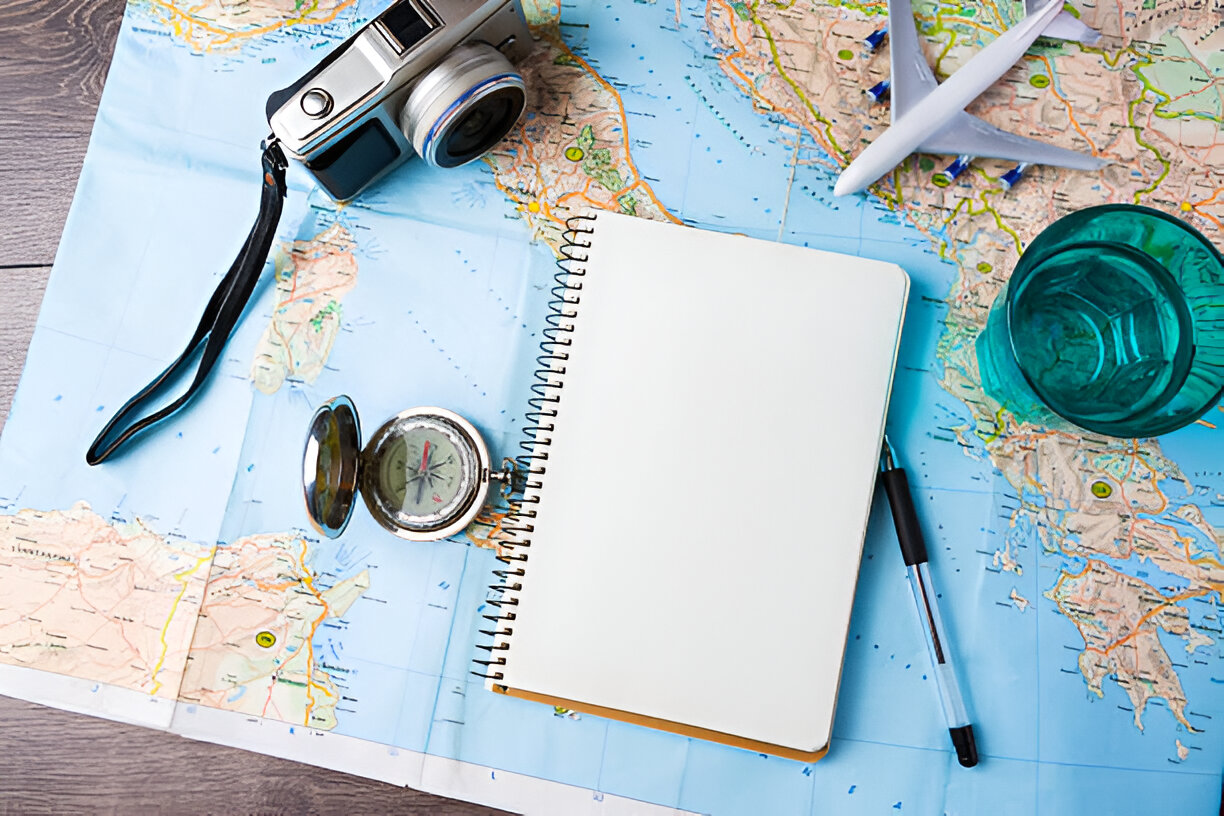“Unleash Your Spirit: Discover the Untamed Beauty of Adventure Tourism in Remote Destinations”
Introduction
Adventure tourism in remote locations offers an unparalleled opportunity to explore the untouched beauty and raw allure of the world’s most isolated destinations. Far from the bustling crowds and well-trodden paths, these remote areas promise unique experiences that blend thrill, discovery, and cultural immersion. From the rugged terrains of Patagonia to the mystical landscapes of Mongolia, adventure tourism invites intrepid travelers to step beyond their comfort zones and engage with nature in its most pristine form. Whether it’s trekking through dense jungles, scaling towering peaks, or navigating winding rivers, each journey into these secluded regions is a testament to human curiosity and the enduring spirit of exploration. As adventurers traverse these distant lands, they not only witness breathtaking vistas but also connect with indigenous communities, gaining insights into diverse traditions and ways of life. In an era where the world feels increasingly interconnected, adventure tourism in remote locations offers a rare chance to disconnect, reflect, and rediscover the wonders of our planet.
Discovering Hidden Gems: Adventure Tourism in the Uncharted Territories
Adventure tourism has emerged as a captivating segment of the travel industry, offering thrill-seekers the opportunity to explore uncharted territories and discover hidden gems in remote locations. This form of tourism is characterized by its focus on engaging with nature, embracing physical challenges, and experiencing cultural exchanges in areas that are often untouched by mass tourism. As travelers increasingly seek authentic and transformative experiences, adventure tourism in remote locations has gained significant traction, providing a unique blend of excitement and discovery.
One of the primary appeals of adventure tourism in remote areas is the opportunity to connect with pristine natural environments. These locations, often characterized by their rugged landscapes and diverse ecosystems, offer a sense of solitude and tranquility that is rarely found in more popular tourist destinations. For instance, the vast wilderness of Patagonia in South America presents a breathtaking backdrop for activities such as trekking, mountaineering, and wildlife observation. Similarly, the remote islands of the South Pacific, with their crystal-clear waters and vibrant coral reefs, provide an idyllic setting for diving and snorkeling enthusiasts. By venturing into these unspoiled regions, travelers can immerse themselves in the beauty of nature and gain a deeper appreciation for the planet’s ecological diversity.
In addition to the allure of natural beauty, adventure tourism in remote locations often involves engaging with local cultures and communities. These interactions can offer profound insights into the traditions, customs, and lifestyles of indigenous peoples who have inhabited these areas for centuries. For example, travelers to the remote highlands of Papua New Guinea may have the opportunity to participate in traditional ceremonies and learn about the intricate art of tribal craftsmanship. Such experiences not only enrich the traveler’s understanding of different cultures but also contribute to the preservation of these unique cultural heritages. By supporting local communities through responsible tourism practices, adventurers can help ensure that these cultures continue to thrive in the face of globalization.
Moreover, the physical challenges associated with adventure tourism in remote locations add an element of personal growth and achievement. Whether it is conquering the peaks of the Himalayas or navigating the dense jungles of the Amazon, these experiences often require a combination of physical endurance, mental resilience, and adaptability. The sense of accomplishment that comes from overcoming these challenges can be immensely rewarding, fostering a sense of empowerment and self-discovery. Furthermore, the unpredictable nature of these environments necessitates a heightened awareness and respect for the natural world, encouraging travelers to adopt sustainable practices and minimize their environmental impact.
As the demand for adventure tourism in remote locations continues to grow, it is essential to consider the implications for both the environment and local communities. Sustainable tourism practices, such as minimizing waste, respecting wildlife, and supporting local economies, are crucial to preserving the integrity of these fragile ecosystems and ensuring that future generations can enjoy their wonders. By prioritizing responsible travel, adventurers can contribute to the conservation of these remote areas while still indulging their sense of exploration and discovery.
In conclusion, adventure tourism in remote locations offers a unique and enriching experience for those seeking to explore the world’s hidden gems. By embracing the challenges and opportunities presented by these uncharted territories, travelers can forge meaningful connections with nature and culture, all while contributing to the sustainability of these remarkable destinations. As this form of tourism continues to evolve, it holds the promise of not only satisfying the wanderlust of intrepid explorers but also fostering a deeper understanding and appreciation of the world’s most remote and awe-inspiring places.
Thrill-Seeker’s Paradise: Extreme Sports in Remote Destinations
Adventure tourism has emerged as a captivating segment of the travel industry, drawing thrill-seekers to remote locations where extreme sports offer unparalleled excitement. These destinations, often characterized by their untouched natural beauty and challenging terrains, provide the perfect backdrop for adrenaline-pumping activities. As travelers increasingly seek unique experiences that push the boundaries of conventional tourism, remote locations have become a haven for those eager to engage in extreme sports.
One of the primary attractions of adventure tourism in remote areas is the opportunity to participate in activities that are not readily available in more accessible locations. For instance, the rugged landscapes of Patagonia in South America offer an ideal setting for mountaineering and ice climbing. The region’s towering peaks and expansive glaciers present a formidable challenge even for seasoned climbers, while the breathtaking vistas reward those who dare to conquer them. Similarly, the vast deserts of Namibia provide a unique environment for sandboarding, where enthusiasts can glide down towering dunes, experiencing the thrill of speed in a surreal, otherworldly setting.
Moreover, remote locations often boast pristine natural environments that enhance the overall experience of extreme sports. The crystal-clear waters of the Maldives, for example, are a paradise for scuba divers and snorkelers. Here, adventurers can explore vibrant coral reefs teeming with marine life, offering a glimpse into an underwater world that remains largely untouched by human activity. In contrast, the dense jungles of Borneo present a different kind of challenge, where intrepid travelers can embark on jungle treks and river rafting expeditions, immersing themselves in the rich biodiversity and untamed wilderness of the region.
In addition to the allure of the activities themselves, the cultural and environmental aspects of remote destinations add another layer of intrigue to adventure tourism. Engaging with local communities and learning about their traditions and way of life can enrich the travel experience, providing insights that go beyond the thrill of extreme sports. For instance, in the highlands of Nepal, trekkers can interact with Sherpa communities, gaining an appreciation for their resilience and deep connection to the mountainous landscape. This cultural exchange not only enhances the adventure but also fosters a sense of responsibility towards preserving these unique environments.
However, it is essential to recognize the challenges and responsibilities that come with adventure tourism in remote locations. The fragile ecosystems and cultural heritage of these areas require careful consideration and sustainable practices to ensure their preservation for future generations. Travelers and tour operators alike must prioritize environmental conservation and respect for local communities, adopting practices that minimize their impact on the natural and cultural landscapes.
In conclusion, adventure tourism in remote locations offers thrill-seekers an unparalleled opportunity to engage in extreme sports amidst some of the world’s most stunning and untouched environments. The combination of challenging activities, pristine natural settings, and cultural immersion creates a unique travel experience that is both exhilarating and enriching. As the demand for such experiences continues to grow, it is imperative that all stakeholders commit to sustainable practices, ensuring that these remote paradises remain a source of wonder and adventure for years to come.
Cultural Immersion: Connecting with Indigenous Communities Through Adventure Tourism
Adventure tourism in remote locations offers a unique opportunity for cultural immersion, allowing travelers to connect with indigenous communities in ways that are both meaningful and transformative. As the world becomes increasingly interconnected, the desire to explore uncharted territories and engage with diverse cultures has grown significantly. This form of tourism not only satisfies the adventurous spirit but also fosters a deeper understanding and appreciation of indigenous ways of life.
One of the most compelling aspects of adventure tourism in remote areas is the chance to experience the authentic traditions and customs of indigenous communities. These communities, often located in isolated regions, have preserved their cultural heritage over centuries, offering a rich tapestry of history, art, and spirituality. By participating in adventure tourism, travelers can engage with these cultures on a personal level, gaining insights that are rarely accessible through conventional tourism.
Moreover, adventure tourism provides a platform for indigenous communities to share their stories and traditions with a global audience. This exchange of knowledge and culture can lead to a greater appreciation of the diversity and complexity of human societies. For instance, travelers may have the opportunity to learn traditional crafts, participate in local ceremonies, or even assist in community projects. Such experiences not only enrich the traveler’s understanding but also empower indigenous communities by providing them with a voice and a means to preserve their cultural identity.
In addition to cultural exchange, adventure tourism in remote locations often contributes to the economic development of indigenous communities. By attracting visitors, these communities can generate income that supports local businesses and initiatives. This economic boost can lead to improved infrastructure, education, and healthcare, ultimately enhancing the quality of life for community members. Furthermore, when managed sustainably, adventure tourism can promote environmental conservation, as indigenous communities are often the stewards of their natural surroundings. By involving these communities in tourism planning and decision-making, there is a greater likelihood of achieving a balance between economic growth and environmental preservation.
However, it is crucial to approach adventure tourism with sensitivity and respect for the cultures being visited. Travelers must be mindful of the potential impacts their presence can have on indigenous communities. This includes respecting local customs, seeking permission before taking photographs, and supporting community-led tourism initiatives. By doing so, travelers can ensure that their visit is both respectful and beneficial to the host community.
Moreover, tour operators and travel companies play a vital role in facilitating responsible adventure tourism. By collaborating with indigenous communities, they can create itineraries that prioritize cultural sensitivity and sustainability. This collaboration can lead to the development of tourism experiences that are not only enriching for travelers but also empowering for indigenous communities.
In conclusion, adventure tourism in remote locations offers a unique opportunity for cultural immersion and connection with indigenous communities. Through respectful engagement and sustainable practices, travelers can gain a deeper understanding of diverse cultures while contributing to the economic and social well-being of these communities. As the demand for authentic and meaningful travel experiences continues to grow, adventure tourism stands as a powerful tool for cultural exchange and preservation, fostering a more inclusive and interconnected world.
Conclusion
Adventure tourism in remote locations offers a unique and exhilarating experience that combines the thrill of exploration with the beauty of untouched natural landscapes. These destinations provide travelers with the opportunity to engage in activities such as hiking, climbing, and wildlife observation, often in environments that are both challenging and awe-inspiring. The allure of adventure tourism lies in its ability to push personal boundaries, foster a deep connection with nature, and promote cultural exchange with local communities. However, it is crucial to approach these adventures with a commitment to sustainability and respect for the environment and indigenous cultures. By doing so, adventure tourism can continue to thrive, offering future generations the chance to explore and appreciate the wonders of our planet’s most remote and pristine locations.




